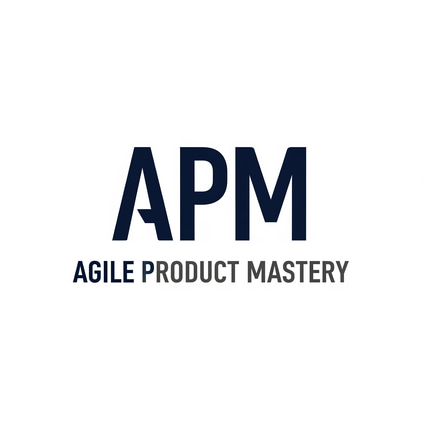How to Build a Product Career Moat AI Can’t Replace
Discover how to future-proof your product career by building a deep, defensible career moat that AI can’t replicate — using leverage, clarity, and optionality.
CAREER OPTIONALITYAI & PRODUCT STRATEGYDIGITAL LEVERAGEAGILE LEADERSHIPPRODUCT LEADERSHIP
Written by: Matt Gregory - Founder Agile Product Mastery
7/11/20253 min read


In an era of AI disruption, economic uncertainty, and relentless transformation, product professionals are facing a new kind of question:
What makes you irreplaceable?
If you’re mid-career, this question hits different. You’ve built skills, led teams, shipped features. But now, ChatGPT is writing user stories, startups are scaling without full-time PMs, and entire delivery teams are being outsourced or automated.
So how do you stay relevant, valuable, and in demand?
You build a career moat AI can’t replace.
What Is a Career Moat?
Think of a moat around a castle. It protects what matters. It makes you harder to attack, harder to replicate, and much harder to ignore.
In your product career, a moat is a combination of skills, assets, relationships, and positioning that:
Compounds over time
Is hard to copy
Differentiates you in the market
It’s what makes people seek you out instead of looking for the cheapest resume or the most AI-automated solution.
Let’s break down how to build one.
1. Deep Skill Beats Broad Noise
AI is replacing the generic. If your resume looks like every other mid-level PM, you’re in trouble.
Instead:
Specialise in high-value domains (e.g. FinTech, B2B SaaS, compliance-heavy platforms)
Become known for a "spiky" skill: pricing, GTM, user research synthesis, or high-trust stakeholder wrangling
Build a playbook, not just a resume
Deep skill creates scarcity. Scarcity creates demand.
You don’t need to know everything. You need to be undeniably great at something that matters.
2. Package Your Experience into a Point of View
People don’t buy skillsets. They buy confidence, clarity, and conviction.
A career moat means turning your experiences into principles others can learn from.
Start by documenting:
Your product philosophies (e.g. "No roadmap survives stakeholder reality")
Hard-earned lessons from launches, failures, and turnarounds
Patterns you see across projects and teams
Then share them. On LinkedIn. In blogs. In coffee chats. In stakeholder decks.
When you start to sound like someone with a point of view, people stop seeing you as just another delivery resource.
3. Create Assets That Work While You Sleep
AI doesn’t sleep. Neither should your career moat.
You need leverage:
Create content that builds inbound trust (posts, articles, podcasts)
Build templates, canvases, and frameworks you can reuse
Codify your methods into scalable assets
This turns your knowledge into value people can access without needing a meeting.
Example: a stakeholder alignment checklist, a roadmap prioritisation framework, or even a simple Figma template.
This is where content creation meets career resilience.
4. Build a Reputation, Not Just a Network
A network is who you know. A reputation is what people say about you when you're not in the room.
You want to be known for things like:
"They cut through chaos and bring clarity"
"That’s who I call when a project is going sideways"
"They make everyone better around them"
Reputation is built through consistency, delivery, and sharing what you know.
Don’t hoard knowledge. Give it away. That’s what makes you magnetic.
5. Diversify Your Income, Not Just Your Skills
A real moat includes optionality.
That means building multiple ways to create value, such as:
Contracting
Fractional leadership
Advisory roles
Digital products or courses
Content monetisation
When you’re not dependent on one role, one boss, or one paycheck, you play the game differently. You negotiate differently. You walk away differently.
Optionality gives you leverage.
And AI can’t replace that.
The APM Framework: Your Moat Blueprint
At Agile Product Mastery (APM), we think of the moat in three layers:
1. Strategic Alignment
You know where you're going, who you serve, and why it matters. You're not reactive. You're intentional.
2. Execution Excellence
You don’t just ship fast. You ship smart. You lead delivery in uncertain, high-stakes environments.
3. Continuous Adaptation
You evolve faster than your environment. You use the Learning Loop to stay sharp, stay relevant, and stay ahead.
Final Thoughts: Moats Are Built, Not Given
AI isn't coming for everyone. It's coming for the replaceable.
Your job is to build a moat so deep and so wide that replacement isn’t even a question.
That moat isn’t built overnight. But every decision you make — what you learn, what you share, who you help — is another brick in the wall.
So build it deliberately. Build it publicly. And build it with leverage.
The world doesn’t need more noise. It needs more clarity.
Start there.
Ready to build your career moat?
Follow the journey on LinkedIn or join the APM Inner Circle to get weekly posts, playbooks, and prompts that help you stay relevant, resilient, and in demand.
© Agile Product Mastery — Build a career that scales. Not one that burns out.
Powered by Baltimore Advisory Pty Ltd — ABN 97 678 312 475 — All rights reserved
Follow us on LinkedIn
